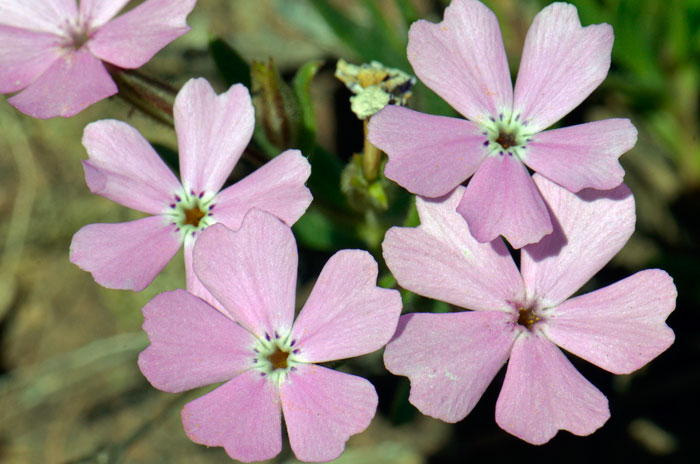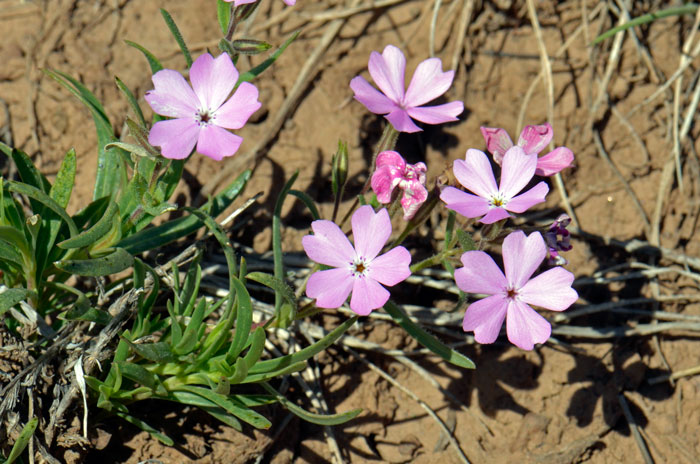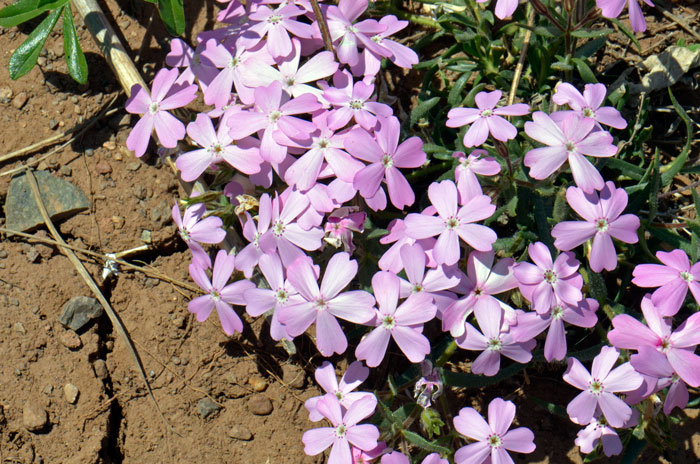Phlox speciosa, Showy Phlox




Scientific Name: Phlox speciosa
Common Name: Showy Phlox
Also Called:
Family: Polemoniaceae, Jacob’s Ladder or Phlox Family
Synonyms: (Phlox woodhousei, Phlox speciosa subsp. woodhousei, Phlox woodhousei var. oculata )
Status: Native
Duration: Perennial
Size: Up to 18 inches or more.
Growth Form: Forb/herb; subshrub; stems erect.
Leaves: Green; leaves up to 1 ½ inches or more, leaf shape variable, linear-lanceolate.
Flower Color: Pink to white; purple spots in center of flower, inflorescence terminal, flowers on short peduncles, corolla petals notched,
Flowering Season: Spring and autumn.
Elevation: 3,500 to 8,000 feet; 1,500 to 7,000 feet in California.
Habitat Preferences: Open woods and rocky slopes.
Recorded Range: Showy Phlox is native to the western ½ of North America. In the United States it is found in AZ, CA, ID, MT, NM, NV, OR, WA and in Canada in British Columbia. In Arizona it occurs in the northern ½ half of the state and in Graham and Greenlee counties.
North America & US County Distribution Map for Phlox speciosa.
North America & US County Distribution Map for Phlox speciosa subsp. woodhousei.
U.S. Weed Information: No information available.
Invasive/Noxious Weed Information: No information available.
Wetland Indicator: No information available.
Threatened/Endangered Information: No information available.
Genus Information:USDA Plants.gov includes 72 species for the genus Phlox.
The Plant List includes 85 accepted species names for the genus Phlox.
6 sub-species in Phlox speciosa, 1 sub-species in the southwest;
Phlox speciosa subsp. lanceolata, Showy Phlox, (OR, WA);
Phlox speciosa subsp. lignosa, Showy Phlox, (OR, WA);
Phlox speciosa subsp. nitida, Showy Phlox, (OR, OR, WA);
Phlox speciosa subsp. occidentalis, Showy Phlox, (CA, ID, MT, NV, OR, WA; BC, Canada);
Phlox speciosa subsp. speciosa, Showy Phlox, (OR, ID, WA);
Phlox speciosa subsp. woodhousei, Woodhouse's Phlox, (AZ, NM).
Comments: Woodhouse's Phlox (Phlox speciosa subsp. woodhousei) is found only in Arizona and extending into the western side of the Gila National Forest in New Mexico. In Arizona it is found mostly in Ponderosa Pine forests in the northern ½ of the state; in New Mexico it occurs in the west-central (Catron County) part of the state. The type specimen of Phlox woodhousei is from Coconino County, AZ.
The sub-species in Arizona of this dwarf-shrub may be recognized by their thick oblong or obtuse leaves.
In Southwest Desert Flora also see; Slender Phlox, Phlox gracilis, and Santa Catalina Mountain Phlox, Phlox tenuifolia.

